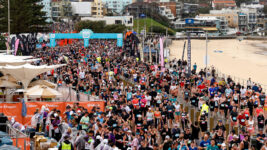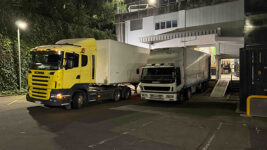INSTALLATION
12 Aug 2024
MR B’S, SYDNEY
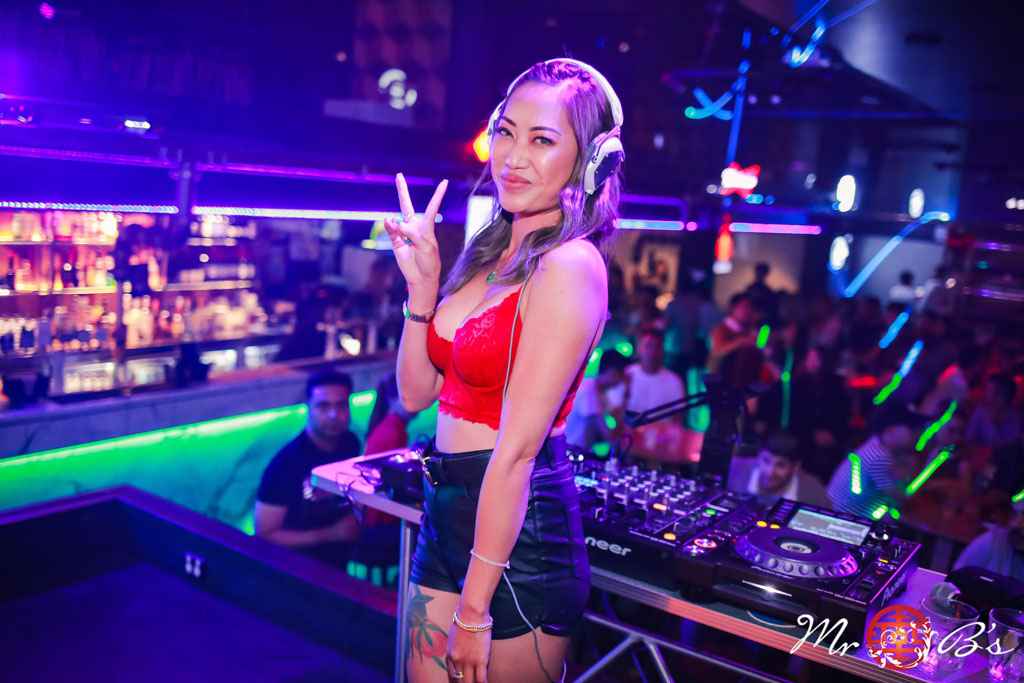
Subscribe to CX E-News
Running ‘til 2 am Monday to Thursday, and til ‘3 am Friday and Saturday, Mr B’s in Sydney’s Haymarket is a go-to bar, restaurant and nightclub for the city’s nightowls. With live music and DJs serving up tunes next to delicious Thai food for lunch and dinner at the ground and mezzanine levels, the venue also houses Bolt Nightclub downstairs, which parties late with a revolving roster of bands and DJs.
With the nighttime scene ever evolving, and a change of building ownership, Mr B’s has found itself hosting more and more bands in its upstairs space, which the original sound system wasn’t adequate for. Phil Rigger, whose company Monstereo has worked extensively designing and installing club systems in Sydney and surrounds, had been involved with the original PA installation, and was asked to inject new life into the venue.

“The original upstairs system was for Nightlife video playback and DJs,” relates Phil. “It was not designed for the live bands that they now host most nights. We’ve got a great relationship with the guy that runs Mr B’s, and when a wealthy investor bought the building and wanted to spend money to really make it work as an entertainment venue, we were really happy to get a builder in and really get to work.”
And work they did. Ceilings were removed, cables cleaned up, new infrastructure installed, a new stage built, subs moved from flown to understage, and much more. Now Phil had to decide which new PA to install.
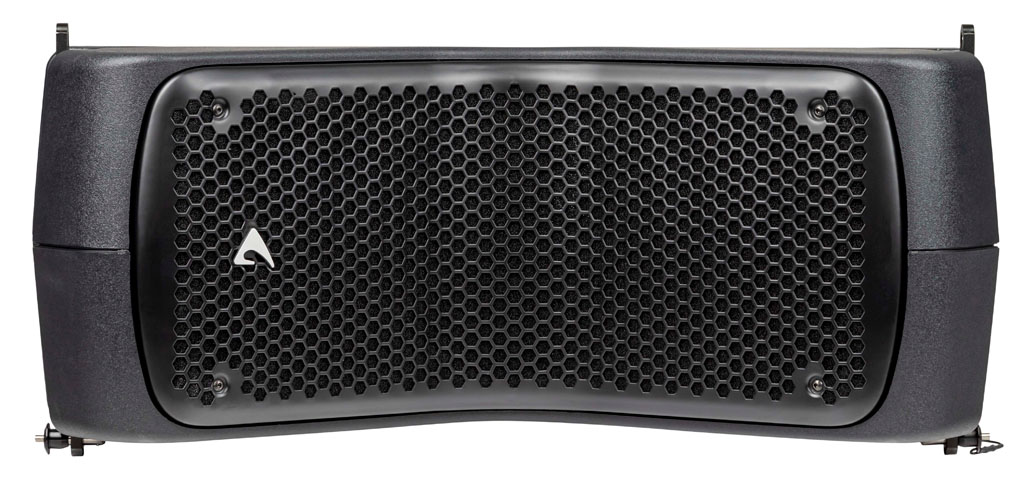
A New Axiom?
There are a lot of choices on the PA market, and Phil had become intrigued by Italian manufacturer Axiom Pro Audio and their AX800ANEO powered and processed line array elements. “I’d read a review of the AX800ANEO out of Europe,” recalls Phil. “The reviewer really liked the way they sounded, and the fact they are a dual 8” that angle across each other. Instead of sitting parallel on a plane, the left woofer angles right, and the right angles to the left. Interestingly, you don’t get a combing effect when you walk in between them. It’s well thought out and well designed.”
Intrigued, Phil wanted to hear them for himself, and asked Australian distributor AVECorp where he could hear some. “I rang AVECorp, and they flew me down to Melbourne to have a listen,” says Phil. “The demo system I heard had four AX800ANEOs a side, with two of their matching SW1800AV2 subs on the floor. AVECorp’s James Pavey and I had a chance to muck around for two or three hours on that, and some competing brand’s systems side-by-side. The thing I was really impressed with was the midrange. To me, it’s warm.”
Considering the performance of the AX800ANEO a point-of-difference for Mr B’s, Phil decided to put them in the upstairs bar and bandroom first. He installed three per side, matched with two Axiom SW1800AV2 dual 18″ subs built under the stage. “It’s a long room with a mezzanine area, so it’s double height,” explains Phil. “The line source really helps throw the whole way at an even volume. Originally, I had a different system plan for the nightclub downstairs, but when I heard the performance of the AX800ANEOs upstairs, I know they would also work for the club. There’s now two a side sitting above people’s heads in the club with two LD Systems 18″ subs, augmented by eight dual 12″ subs built into the stage. There are 15” and 10” LD Systems delay speakers in the back of the room and it’s sounding pretty punchy! It’s 11,000 Watts downstairs and 11,500 Watts upstairs, and it’s all sounding good!”
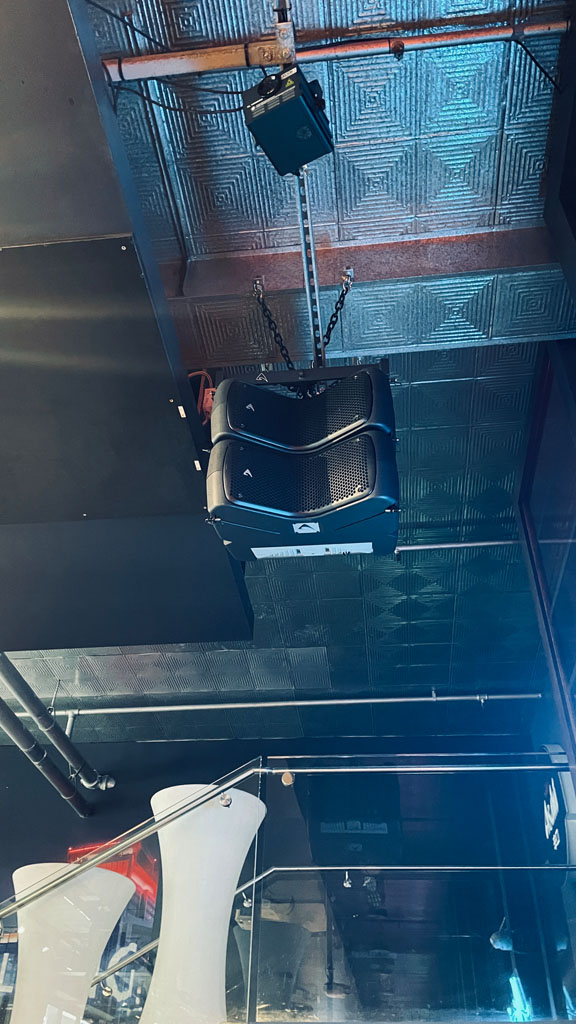
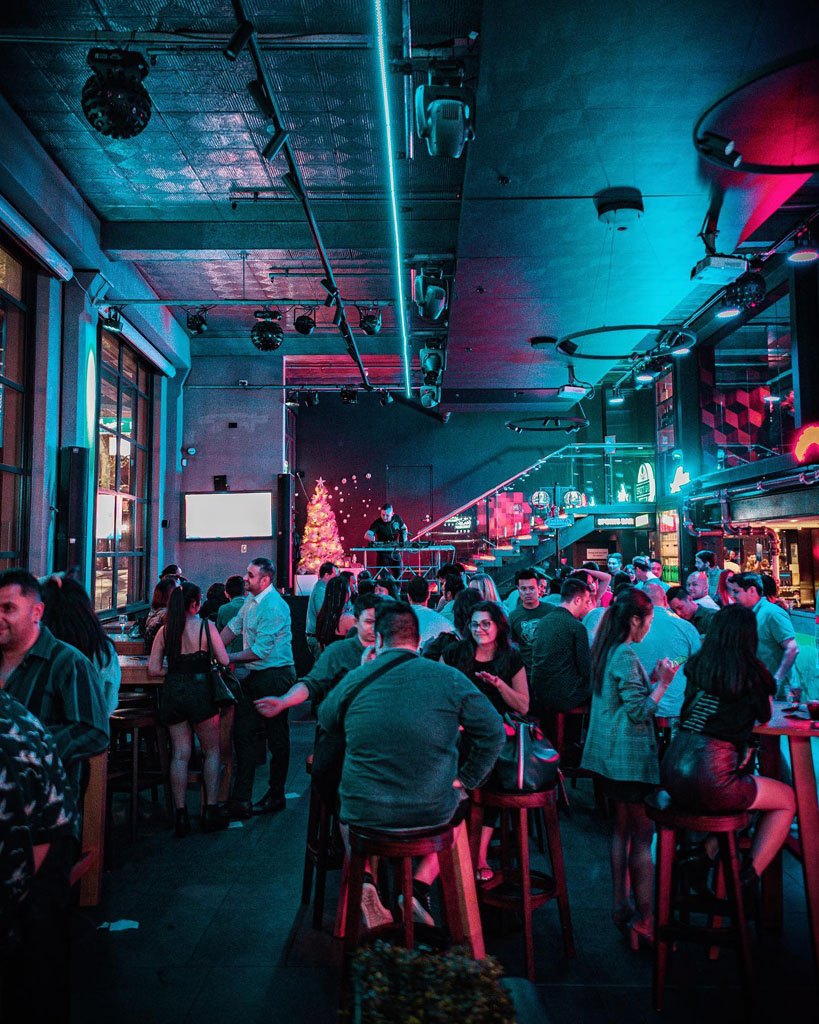

System Processing
Keping all of Mr B’s under control is Phil’s processor of choice, an Allen & Heath AHM-64. “It’s in the rack downstairs and runs all of the zones,” outlines Phil. “The nightclub runs through the AHM-64 for protection and EQ, but I don’t give them any control over it. I can control it with my laptop and dial in from anywhere. On the ground floor, I give them an app that controls all the levels for the ground floor bar, the kitchen, and the restaurant.
Staff can choose different sources and adjust volumes, but they don’t get any more control than that.”
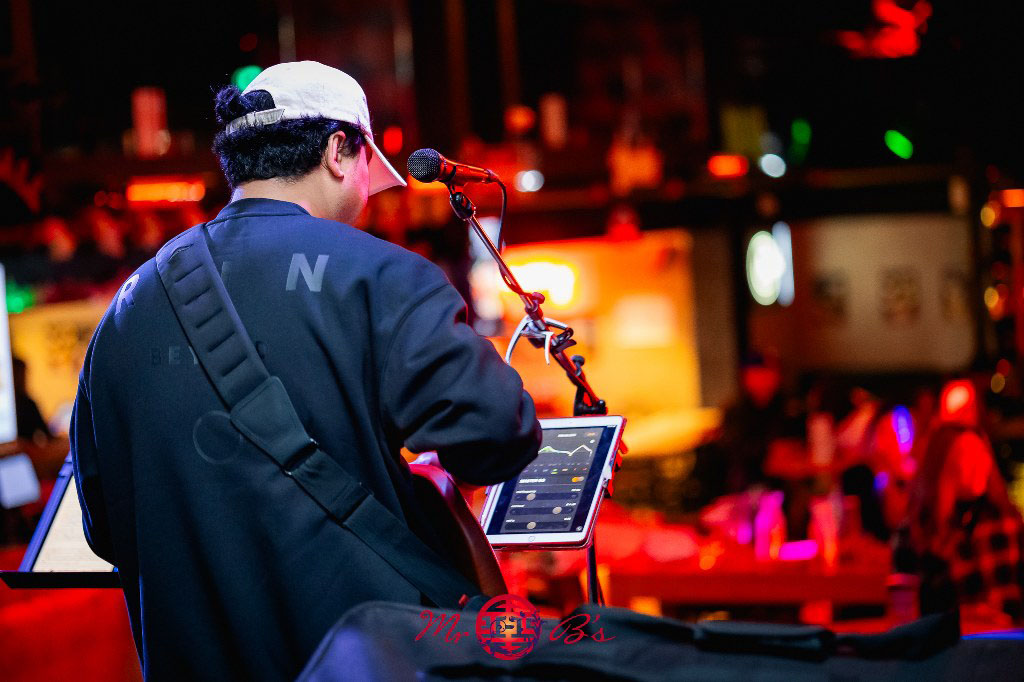
Lighting
It wouldn’t be a bandroom and nightclub without lights, and Phil also got to design a solution for both rigs. “That turned out to be quite a bit of engineering,” admits Phil. “Once we pulled the Gyprock out of the ceiling in the nightclub, we found aircon that actually ran the ground floor, and a whole lot of errant cabling and infrastructure. We had an electrician clean it all up. Because of the amount of moving head fixtures and such that I wanted, I had to build Unistrut supports across from the cable trays to the aircon. The rig ended up being about 45 lights and four lasers, run from a ChamSys QuickQ 20 console, which I’ve also installed on the ground floor.”
The lighting fixtures are mostly from Chauvet DJ, and the lasers from Laserworld, both brands distributed by AVECorp. “The main issue with the nightclub was the height of the room; I couldn’t put any big fixtures in,” continues Phil. “I went with Chauvet DJ Intimidator Spot 206s. They’re a compact moving head, but bigger than the Intimidator 110 or 160. We also installed Chauvet DJ Intimidator WAVE 360 IRCMulti moving head spots, which have four heads on a bar. Each head can move, as can the bar. There are four Laserworld 1000 milliwatt lasers; we didn’t want anything too powerful down there because it could be a little too close for comfort! There are also a number of UV lights and LED bars as a strip effect down one side of the room. Everything is pixel controlled via Resolume software.”
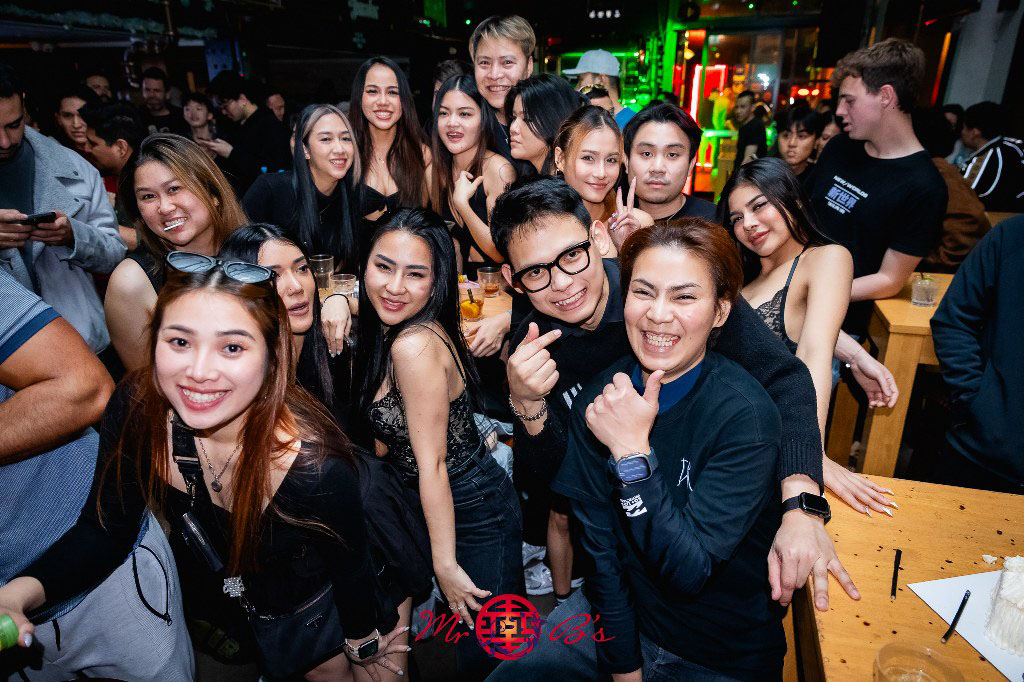

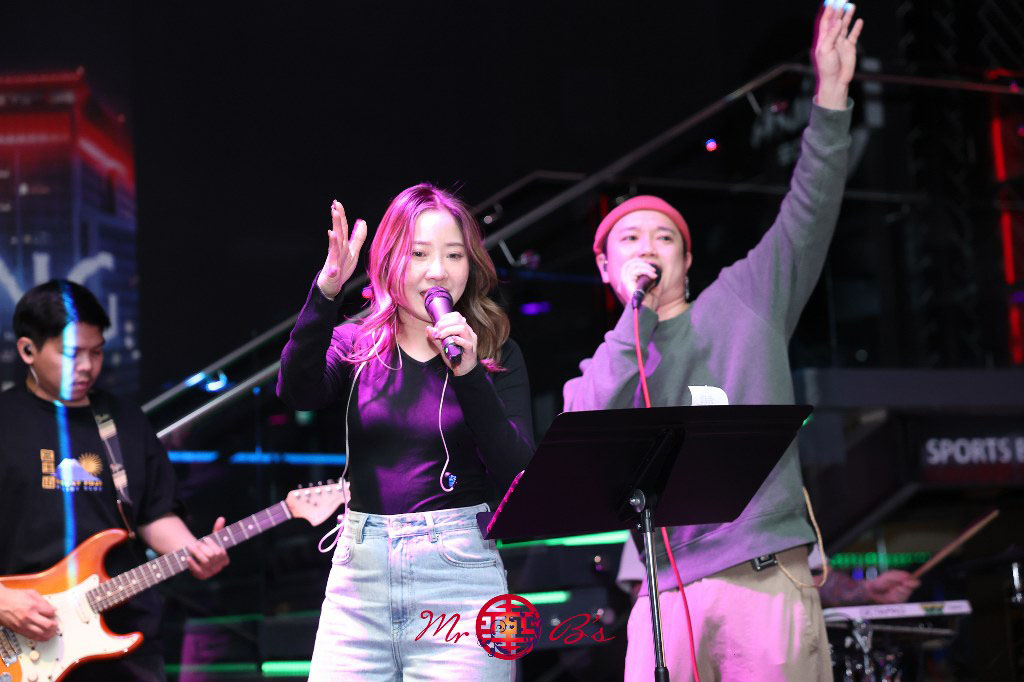
I Know That Name…
While Phil’s company Monstereo is known for sound system design, lighting, and acoustic solutions for nightclubs, pubs, and schools, his recording studio Monstereo Music has operated for years, recording and producing major Australia acts. He might also be known to Sydney gig-goers of a certain vintage…
“I’ve been a lifelong muso,” Phil muses. “I was a trumpet player for 38 years. I was in a band called Outline in the late 70s and early 80s as trumpet player and lead singer.”
Drawing inspiration from punk, jazz, prog and musical iconoclasts like Frank Zappa, Outline’s 1981 single ‘The Cicada (That Ate Five Dock)’ and its accompanying anarchic video, was a cult hit. It even appeared on Triple J’s ‘Hottest 100 of All Time’ in 1989. “We used to pull big crowds,” reminisces Phil. “We gigged for six years, playing with the likes of Midnight Oil, Cold Chisel, and INXS. We ended up breaking up in 1983. I’ve had my own studio for years. I co-wrote ‘Communication’ with John Farnham, and have collaborated with Ian Moss and Tina Arena, among others.”
Not resting on his laurels, Phil is continuing to be creative alongside his more prosaic installation business. “I finished recording and producing an album for someone else a few months ago, but currently I’ve been working on my own solo album. I’ve had a whole bunch of different people play on it; David Jones, a drummer from Melbourne, Ralph Martin on bass, Craig Calhoun on bass, and Carl Orr, the jazz fusion guitar player. I’ve written a book as well, to leave as a legacy for my son to get to know his father through the stories that I leave behind. It’s called ‘I Climbed Mount Druitt’, which if you grew up in Western Sydney like I did, you’ll get the joke!”
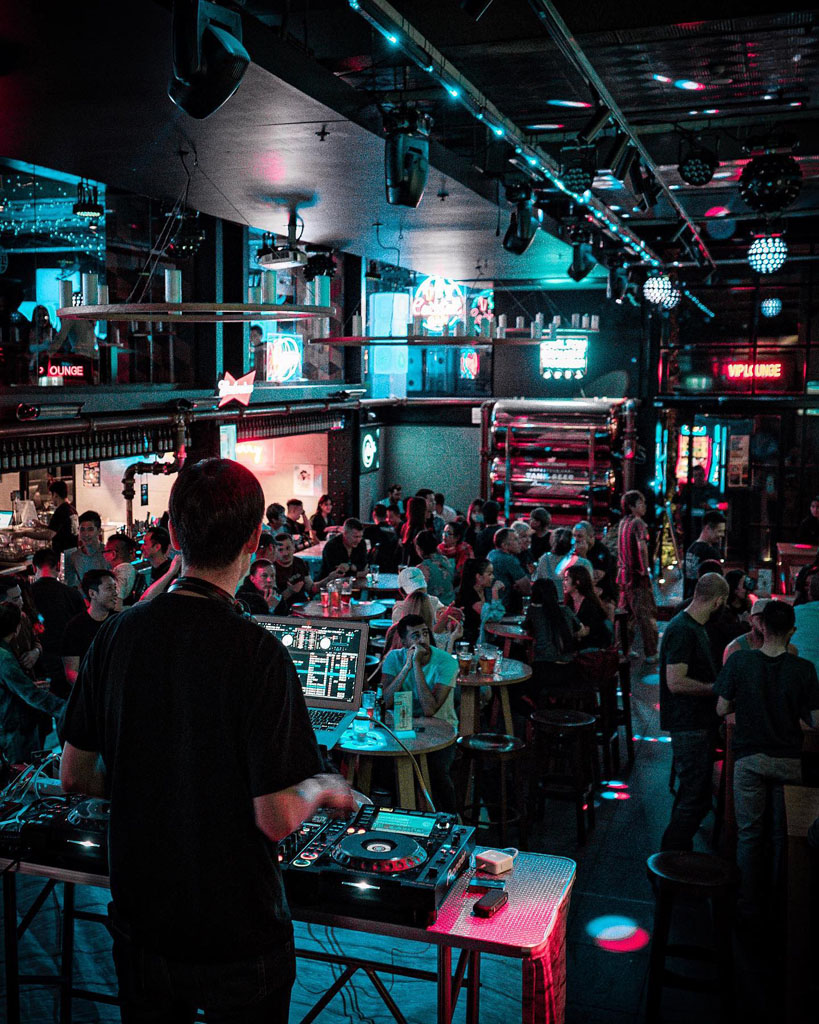
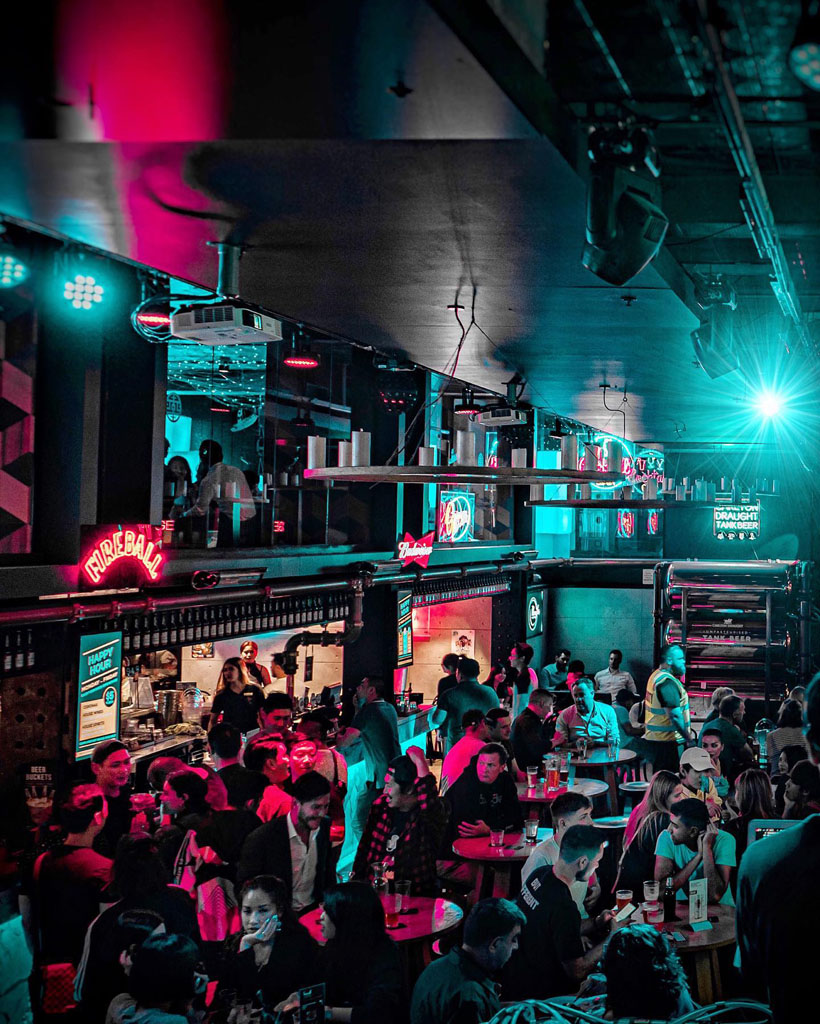
Subscribe
Published monthly since 1991, our famous AV industry magazine is free for download or pay for print. Subscribers also receive CX News, our free weekly email with the latest industry news and jobs.
Recent posts
